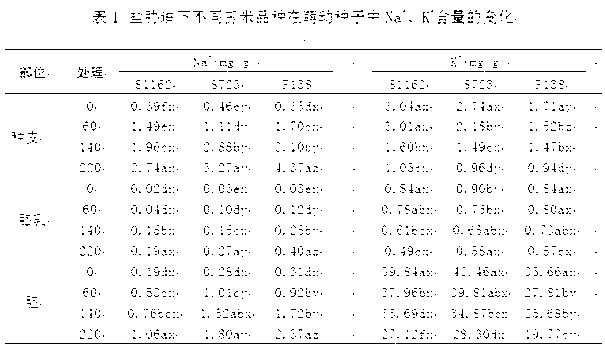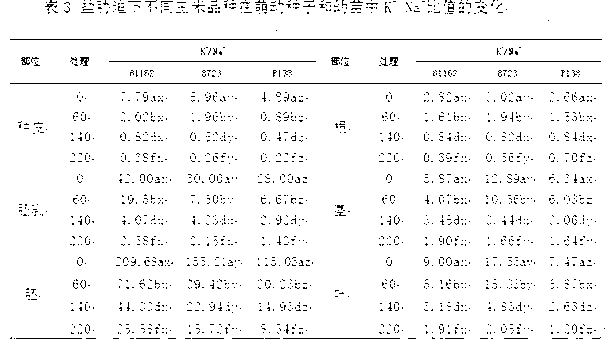Screening method of salt resisting germplasms of corn
A screening method and salt-tolerant technology are applied in the field of screening of salt-tolerant inbred lines of maize, which can solve the problems of prolonging the experimental time, increasing the screening workload, reducing the experimental efficiency, etc., so as to improve the screening efficiency, shorten the screening time, and achieve high application effect of value
- Summary
- Abstract
- Description
- Claims
- Application Information
AI Technical Summary
Problems solved by technology
Method used
Image
Examples
experiment example
[0021] Experimental example, the method for the selection of maize salt-tolerant germplasm, is carried out according to the following steps:
[0022] 1. Collection of materials: Three maize germplasm materials of 81162, 8723 and P138 were collected for the experiment.
[0023] 2. Seed disinfection: select undamaged seeds of the same size, sterilize with 0.5% sodium hypochlorite for 10 min, rinse with distilled water for 3 times, and dry the attached water with filter paper.
[0024] 3. Seed soaking under salt stress: After the seeds were sterilized, soak the seeds in 0 mmol / L, 60 mmol / L, 140 mmol / L, 220 mmol / L NaCl solutions for 12 h, and the seed soaking treatment in distilled water was used as the control;
[0025] 4. Seed germination experiment: The seeds treated in step 3 were placed in a petri dish with a diameter of 12 cm, and double-layered filter paper was used as a germination bed, with 30 seeds per dish. 0 mmol / L, 60 mmol / L, 140 mmol / L and 220 mmol / L NaCl solutions ...
PUM
 Login to View More
Login to View More Abstract
Description
Claims
Application Information
 Login to View More
Login to View More - R&D
- Intellectual Property
- Life Sciences
- Materials
- Tech Scout
- Unparalleled Data Quality
- Higher Quality Content
- 60% Fewer Hallucinations
Browse by: Latest US Patents, China's latest patents, Technical Efficacy Thesaurus, Application Domain, Technology Topic, Popular Technical Reports.
© 2025 PatSnap. All rights reserved.Legal|Privacy policy|Modern Slavery Act Transparency Statement|Sitemap|About US| Contact US: help@patsnap.com



